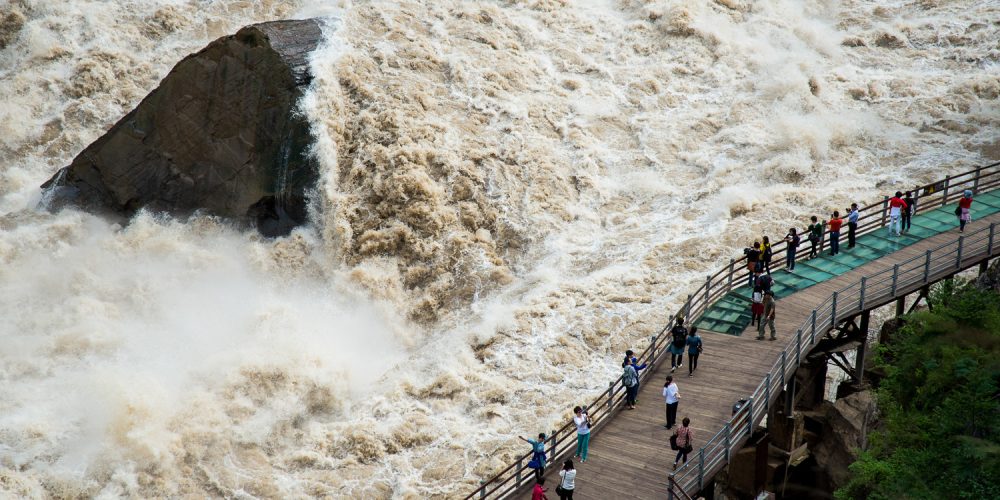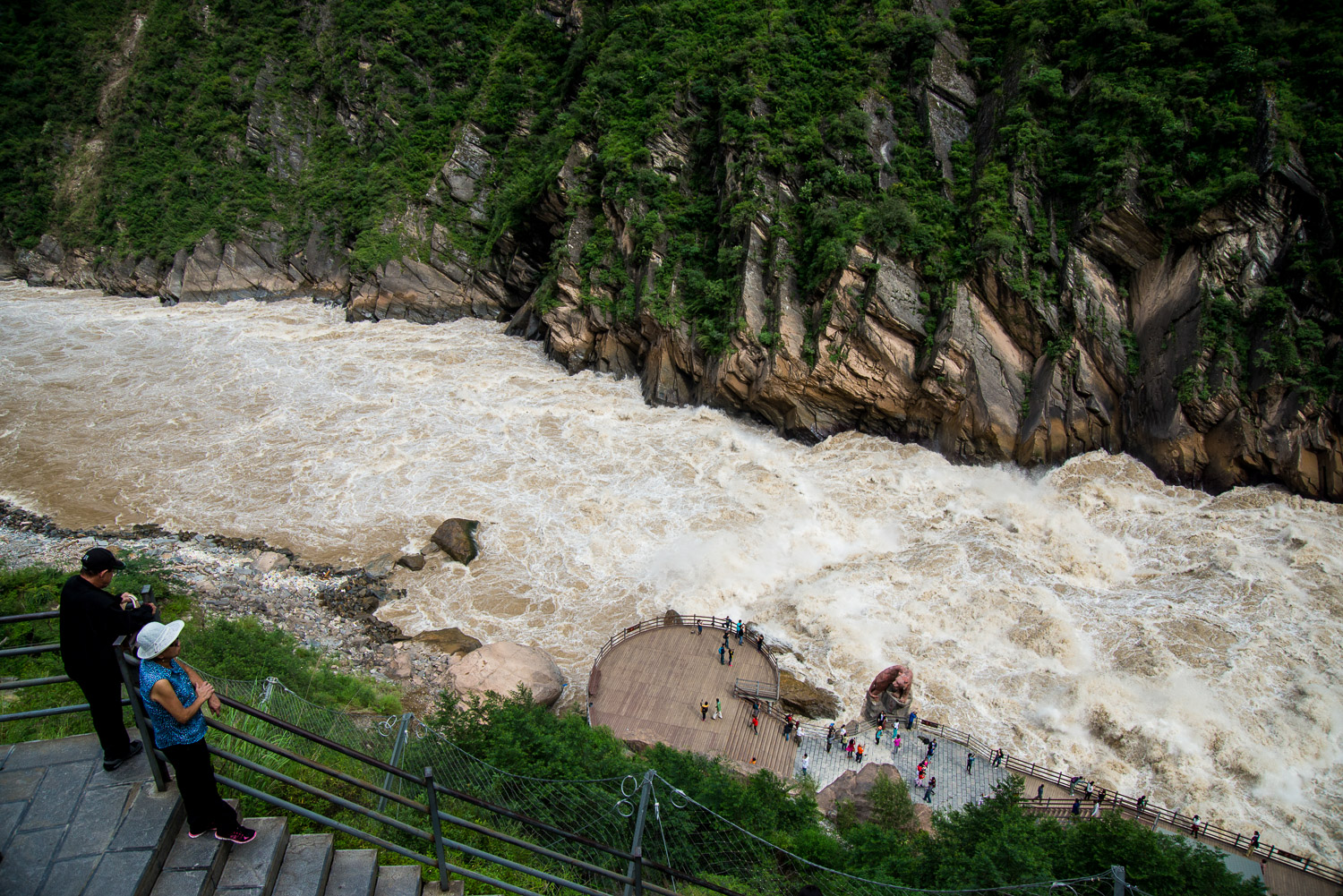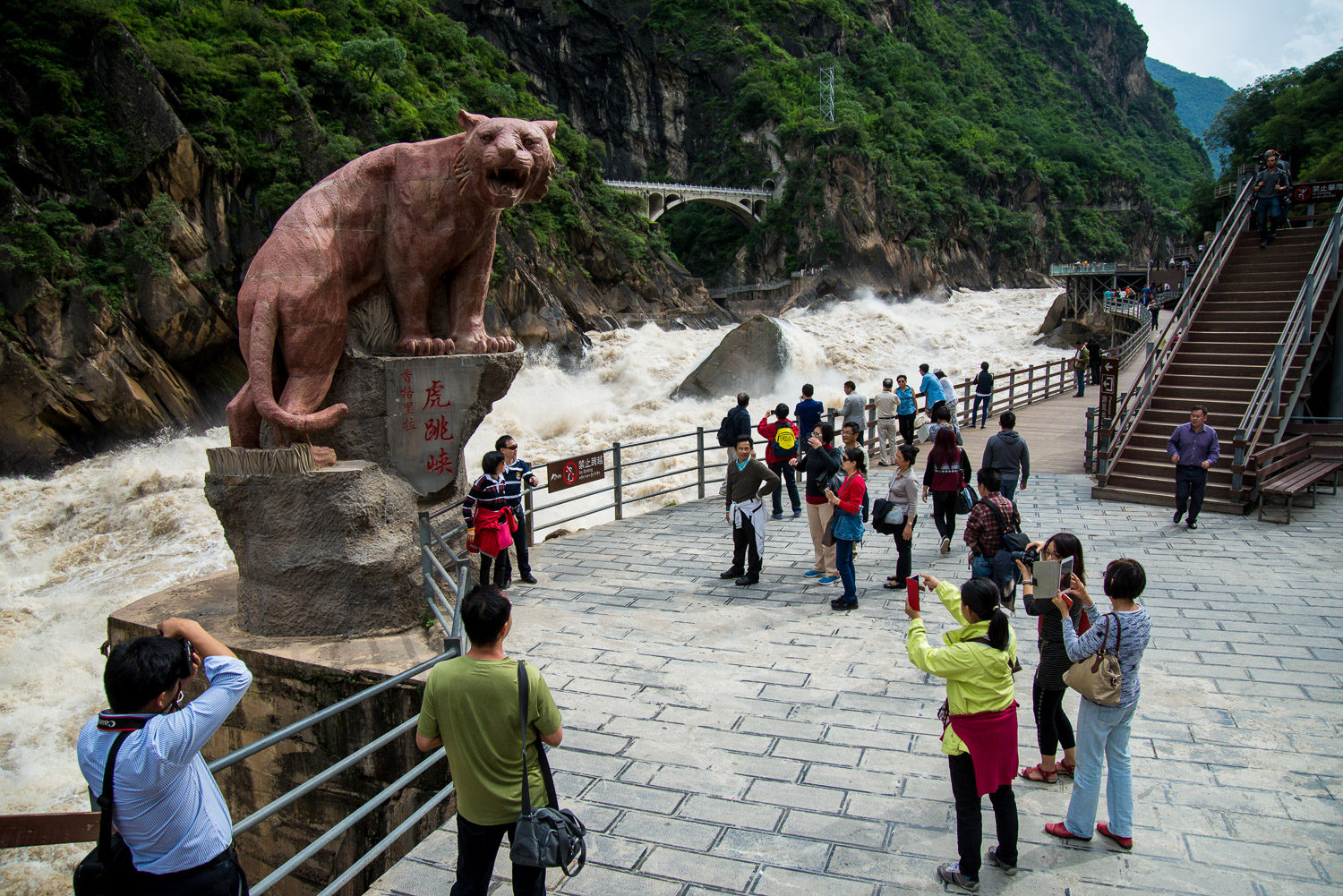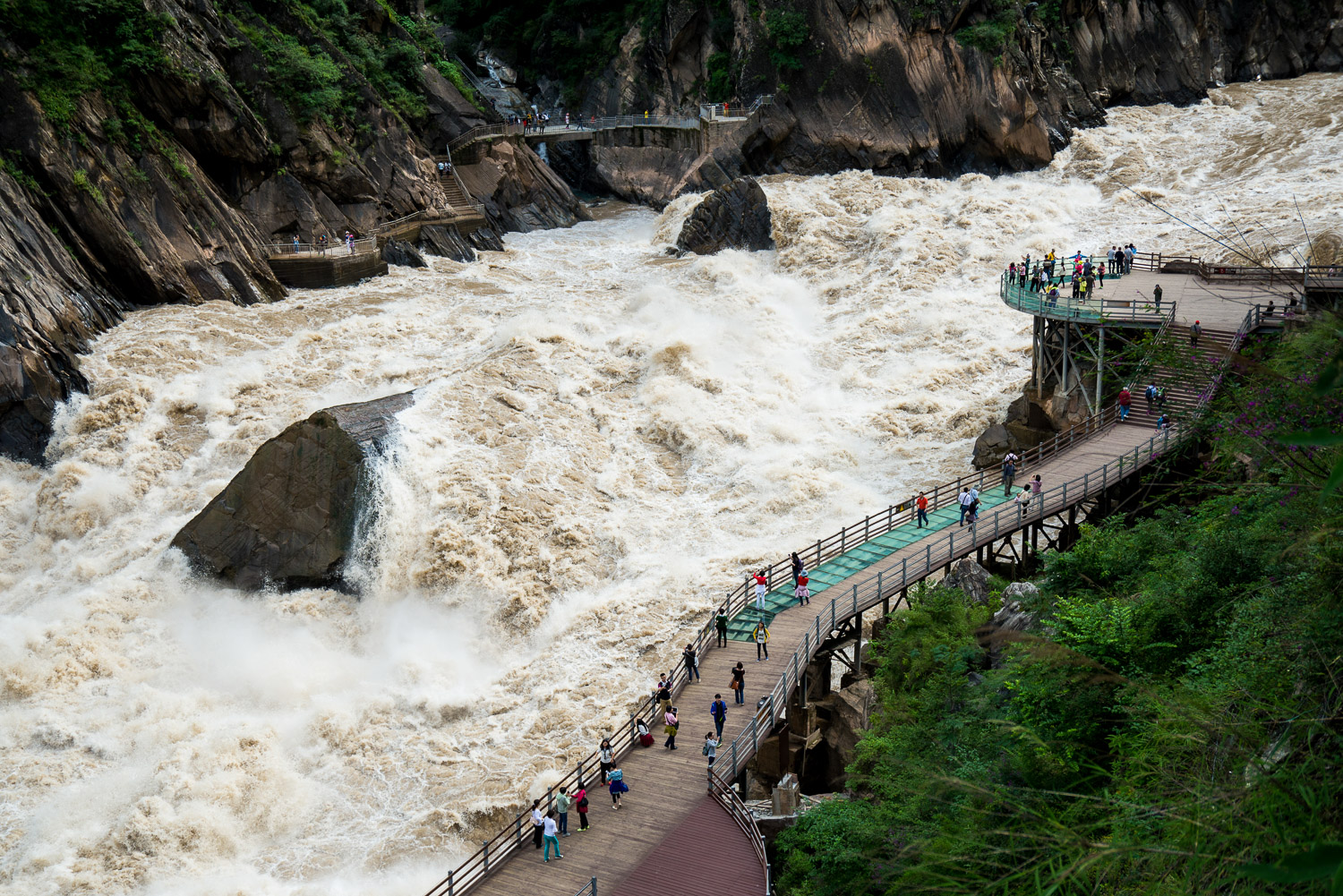The Stone of the Gold Dust River
When you plan to spend your vacation in China, be conscious that some tourist attractions can be very far, up to a few hundred kilometres, from the place you will stay at. We sincerely recommend that your visit to China be precisely planned. If you think that you will get organized as you go… that will cost you money; more important, it will cost you your valuable time.
China is the country where you always have to go forward, forward and only forward. That is the only way to fulfill what you have planned, and then you will have an opportunity to pay close attention to details which you will not find in any tourism brochures, books, and travel guides, printed or online. Another valuable thing: make sure that you read firsthand stories about different travel experiences from other tourists who have already visited the localities and tourist attractions that you have marked on your maps.
Bring dried fruit, some nuts, and plenty of water. Layer your clothes to stay warm, and wear rain-resistant clothing and waterproof shoes. It is not that we make plans on your behalf, but the recommended things will be beneficial to you when you arrive at the foot of one of the deepest gorges in the world – Tiger Leaping Gorge.
Legend has it that a tiger chased by hunters had leaped over the Gold Dust River, jumping from one side to the other at its narrowest point. Near the gorge confluence, precisely in the middle of the river, there is a rock called Tiger Leaping Rock, which rises above the surface of the river,. A riverbank on one side, a riverbank on the opposite side, and a rock in the middle… we believe that you understand how the tiger had escaped and that we have a pretty clear picture of how the place has gotten its name – Tiger Leaping Gorge. Yes!? No!? Yes, of course…
There is a saying: “Where there’s smoke, there’s fire!”. In reality a tiger could have jumped about 30 metres. At the present time we cannot be quite sure because of the possibility that the force of the river or erosion over time could have reshaped the part of the gorge where the tiger had started his escape. In any case, let us not spoil the story and let us clearly say that we have cheered for the tiger and that we are glad that the hunters have failed to capture him.
The gorge itself is a barrier to water transportation, the velocity of the river pushes the water against the rocky sides of the riverbed, and the frequent occurrence of whirlpools often makes river cruises and transportation too dangerous. The first successful sailing attempt on that part of the river was recorded in September of 1986, when two members of the Chinese Yangtze River Rafting Team lost their lives.
Either looking at it from the top or looking at it from the base, you see that the gorge is lined with rocks, which are 200 metres high and with their sides slanted at an angle of 70 to 90 degrees. Maybe it does not sound very impressive, but if you are at the top of the gorge, you will want to keep a safe distance from the edge.
Remember what we mentioned at the beginning of the story? A good plan, before anything else! You cannot go rafting, but you can have a two-day Jade Dragon Snow Mountain walking tour. Tiger Leaping Gorge trail leads through various sceneries, including the most beautiful sights that China has to offer.
The trail extends across the north side of the gorge, and by following the trail you will pass through quiet villages, shady forests, terraced paddy fields, and steep abysses. Snow covers the mountaintops of Dragon Snow Mountain at 5596 metres (18,360 feet) and Haba Snow Mountain at 5396 metres (17,703 feet) above sea level.
We remind you, have a plan! Even though trails are very tempting for people who love to walk, hikers, and mount climbers, keep in mind that during the rainy season, which lasts from July to October, walking is not allowed. Because of heavy precipitation and possible landslide, the trails are not safe, the ticket booths are closed, and it is forbidden to use the trails.
Advice: Regardless of the season and month, during your stay in some cities in Yunnan province, pay attention to the weather forecast if you wish to visit the locality in attempt to walk the Dragon Snow Mountain trails.
The best time to walk the trails of Tiger Leaping Gorge is in October, November, and May. During that period the days are warm and the sky is clear. The outdoor temperature often falls below 0°C (32°F), so it is beneficial to wear clothing and footwear suitable for mountain conditions. Anyhow, you can visit Tiger Leaping Gorge at any time of year.
Remember that at the beginning we recommended what to bring along… dried fruit, nuts, and water! A walk on the trails of Tiger Leaping Gorge lasts two days.
On the first day of your visit you should walk 17 kilometres (10½ miles) from Qiaotou to Halfway Guesthouse. Expect to accomplish it in 6 hours. After the first two hours of walking, you will get to Naxi Family Guesthouse, a place where you can have lunch. Your next stop will be after another two hours of walking, where you pass through steep terrain, and then you will take a break at the Twenty Eight Bends. After the break, you will have to walk for another two hours to get to Halfway Guesthouse, hence completing the first stage of your journey. At that point you can have a good night’s sleep at the guesthouse, where you will have clean towels and bedding, and of course, warm water to take a shower.
The guesthouse is literally a guest house, surrounded by a wooden terrace – an observation deck with a beautiful vista overlooking Yulong Snow Mountain and Golden Sands River Valley.
On the following day, you need to walk more or less the same distance. At the beginning of that stage of your journey you will see waterfalls and canyons, so before you start you should double-check your camera settings and have the camera handy. After two hours of walking you will arrive at Tina’s Guesthouse. The second part is a walk through steep cliffs on the edges of Jinsha River. The third and final part of the second stage of the journey lasts about two hours. You will walk down the trail to the lower gorge, the lowest part of the gorge, where you board a ferry to get across the river to the place called Daju.
Safety warning: Although the beaten tracks have been used by many, the recommendation is to walk with a companion or in a group, for easier orientation in space and to prevent possible injuries. Also, keep in mind that hospitals and clinics in that area do not have enough people who speak English.
Weather warning: From the foot of the Snow Mountains massif to its summit, the weather alternates between subtropical, mild, humid, and cool climatic conditions. Because of that inconsistence, the average temperature falls by about 0.86°C at every 100 metres.
By the way, in protected areas of the Snow Mountain massif, there are 3,800 different plant species that make that region one of the most diverse in the world. Considering that the Snow Mountains are a large seedbed for flowers and other plants, it is obvious why the region has earned the epithet “the Kingdom of Traditional Medicine”.
The region also provides habitat for endangered animals. Maybe you will see a snub-nosed monkey, clouded leopard, Chinese monal, or Asian golden cat while walking. Maybe… you never know.
The Snow Mountain massif, a small mountain range, consist of 13 summits that run from the north to the south, with their peaks protruding through the clouds.
The entrance fees are 65 yuans (CNY), or a bit more than 8 euros (EUR), and 32 yuans, or just over 4 euros, for students under the age of 25. Bring your ID!
Let us start from the beginning, have a plan! Forward, forward, and only forward! If you are in Shangri-La, we suggest that you combine all those trips into one excursion, visiting one place after another, and you will save some time during your stay in China!
From the north you can reach Tiger Leaping Gorge by a bus from Shangri-La, or from the south, from the city of Lijiang. However, if you are in Kunming, be prepared to take an airplane also, for about an hour. Needles to say, allow some extra time for checking in at the airport, etc. We will add that the bus ride to Tiger Leaping Gorge from Shangri-La, and Lijiang also, lasts between 2 ½ and 3 hours.
There are 4 to 5 departures from Shangri-La and two from Lijiang – at 8:30 (8:30 a.m.) and 9:00 (9:00 a.m.). Tiger Leaping Gorge is open for visitors from 8:30 to 18:00 (8:30 a.m. to 6:00 p.m.), so there is no point in leaving Shangri-La after 9 in the morning. A bus ticket costs between 22 and 25 yuans, and the fare for shuttle vehicles from Lijiang is between 300 and 400 yuans.
—
Copyright: triptease.me
author: Nenad Butaš
photo: Marko Rupena
text.en: Dragan Dobožanović
Content CANNOT be used without permission!





